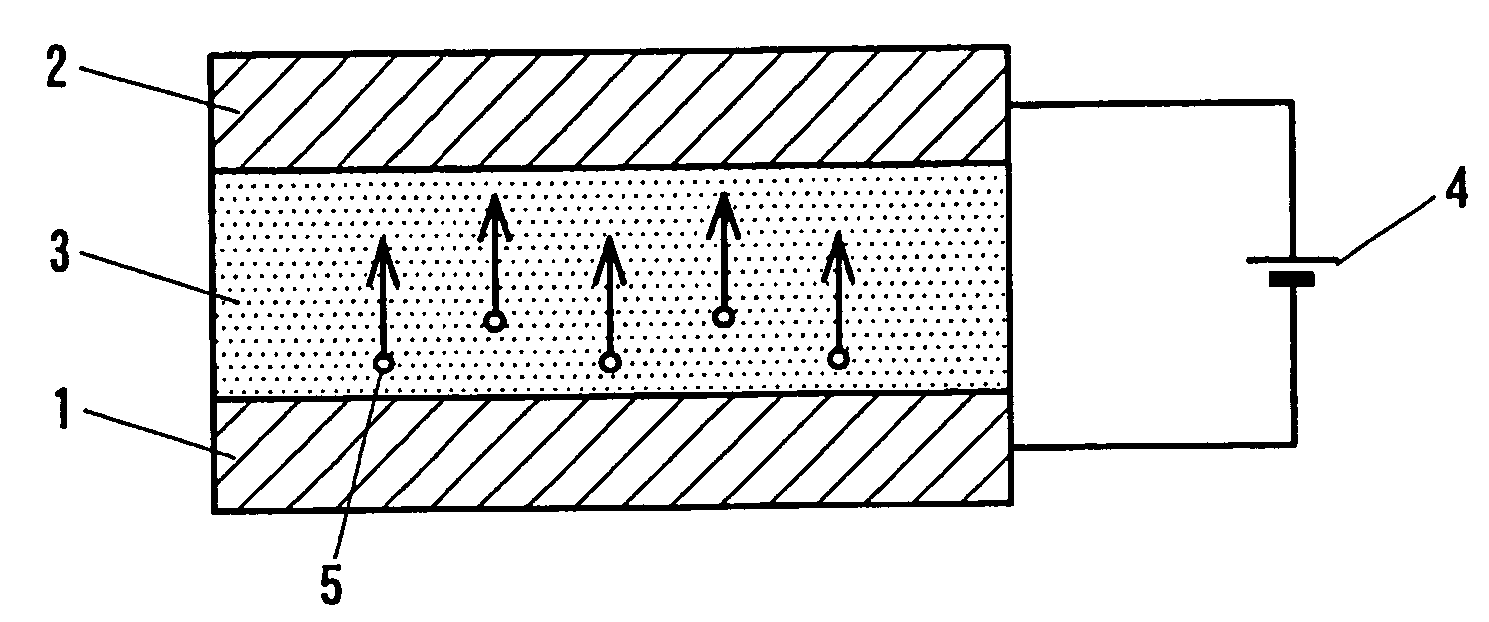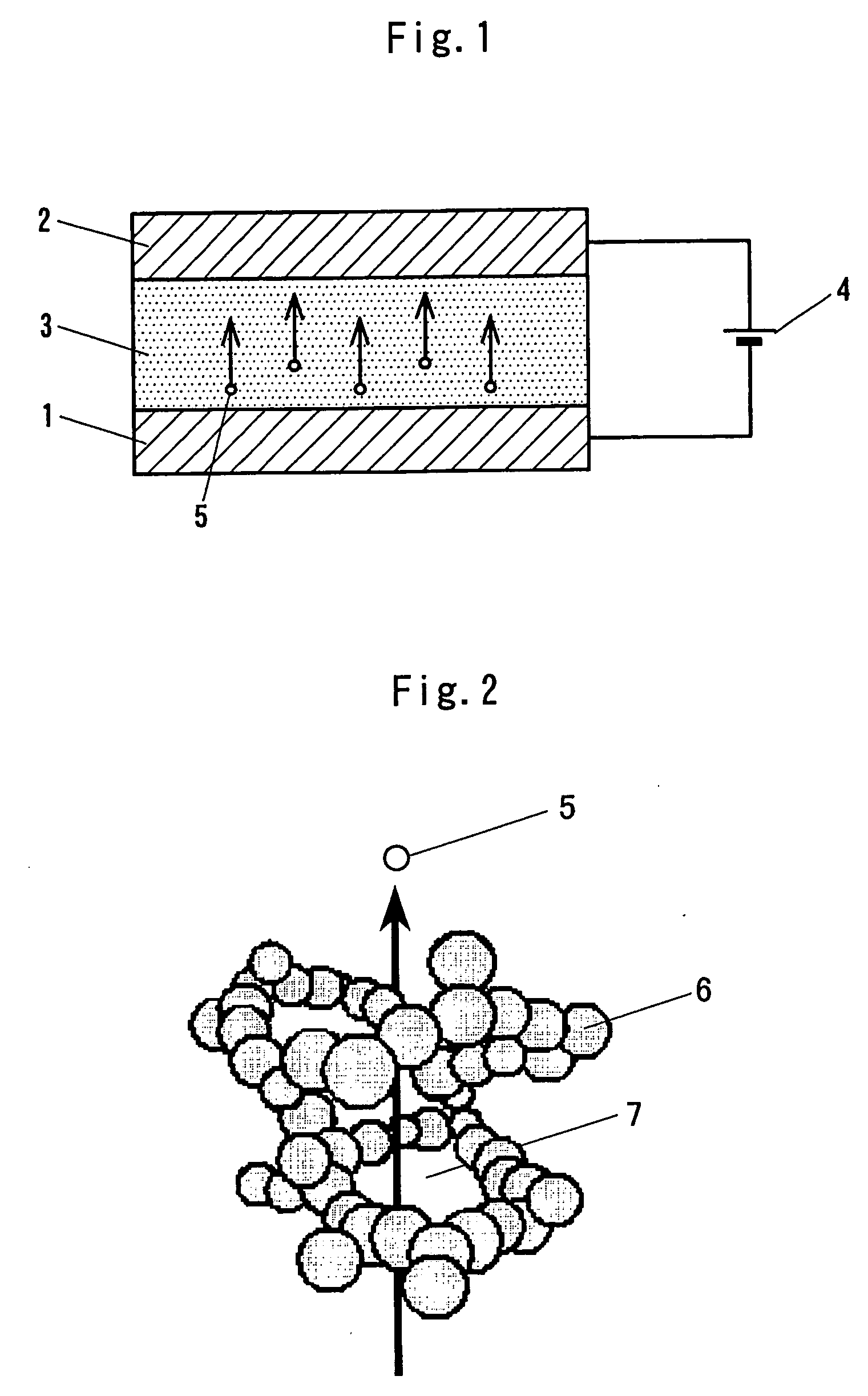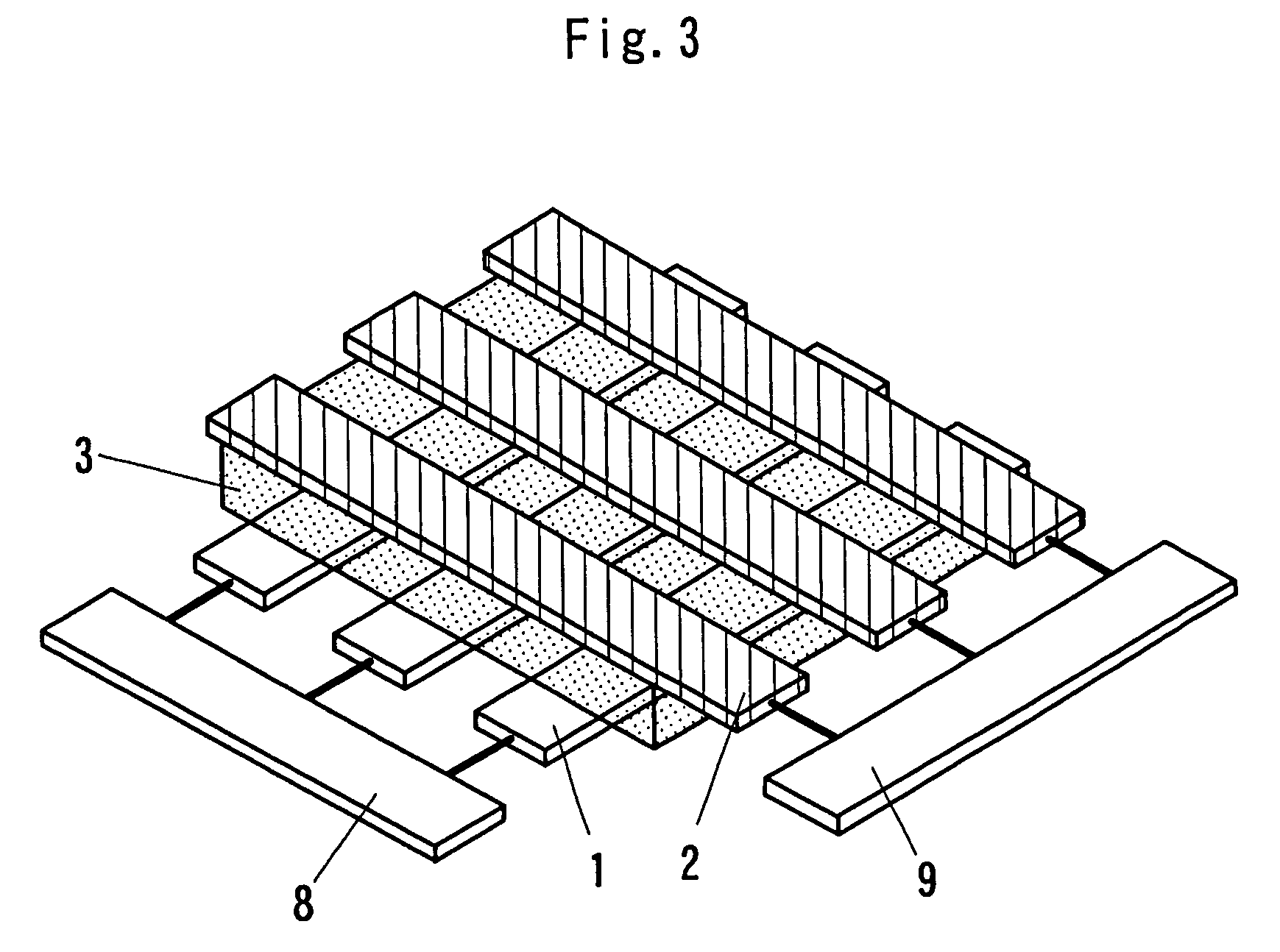Thermoelectric transducer, a manufacturing method thereof, a cooling device using the same, and a method for controlling the cooling device
- Summary
- Abstract
- Description
- Claims
- Application Information
AI Technical Summary
Benefits of technology
Problems solved by technology
Method used
Image
Examples
first embodiment
[0076]FIG. 1 is a cross-sectional view showing the schematic structure of the thermoelectric transducer according to a first embodiment of the present invention. The thermoelectric transducer of the present embodiment comprises an emitter 1, a collector 2, and an electron transport layer 3 in which a vapor phase and a solid phase coexist and which is held between the emitter 1 and the collector 2. It is preferable that the surfaces of the emitter 1 and the electron transport layer 3 are in contact, and that the surfaces of the collector 2 and the electron transport layer 3 are also in contact, as shown in FIG. 1.
[0077] In the thermoelectric transducer of the present embodiment, a voltage is applied across the emitter 1 and the collector 2 by a power source 4 in such a manner that the electric potential of the collector 2 is higher than that of the emitter 1. In the following description, although not illustrated, it is assumed that an object to be cooled is thermally connected to t...
example 1
[0106] With regard to a method for manufacturing a thermoelectric transducer as shown in FIG. 1, the features of the present invention are further clarified with reference to a concrete Example.
[0107] First, the production procedure of an emitter 1 is explained. A polyimide sheet with a thickness of 75 μm was first baked at 2700° C. under an argon (Ar) atmosphere, producing a carbon material comprising graphite as its main composition. In this baking process, barium (Ba) was added to give the carbon material a structure that is able to easily emit electrons. Although Ba was added in this Example, the added substance is not limited to this and other metals can be used as long as they are effective in reducing work function.
[0108] Subsequently, a copper (Cu) plate was prepared for use as a collector 2, and an electron transport layer 3 having a porous structure was formed thereon. In this Example, a porous silica layer with a thickness of about 100 nm for use as the electron transpo...
example 2
[0112] A case where a porous silica layer which composes an electron transport layer 3 was formed by another method is explained below.
[0113] First, electrodialysis of a sodium silicate was performed to prepare a silicic-acid solution with pH 9 to pH10 (the concentration of the silica component in the solution was about 14 wt %). After adjusting the silicic-acid solution to pH 5.5, the gel material solution was applied to a sample (Cu plate) by spin coating in such a manner that its thickness became about 100 nm. A silica humid gel layer having a coated film gelled and solidified was then formed.
[0114] The Cu plate onto which the silica humid gel layer was formed was made hydrophobic by dipping it into an isopropyl alcohol solution with 5 wt % of dimethyldimethoxysilane, and decompression drying was then conducted, producing a porous silica layer composed of a dry gel. The drying conditions were a pressure of 0.05 MPa and a temperature of 50° C. The sample was allowed to stand for...
PUM
 Login to View More
Login to View More Abstract
Description
Claims
Application Information
 Login to View More
Login to View More - R&D
- Intellectual Property
- Life Sciences
- Materials
- Tech Scout
- Unparalleled Data Quality
- Higher Quality Content
- 60% Fewer Hallucinations
Browse by: Latest US Patents, China's latest patents, Technical Efficacy Thesaurus, Application Domain, Technology Topic, Popular Technical Reports.
© 2025 PatSnap. All rights reserved.Legal|Privacy policy|Modern Slavery Act Transparency Statement|Sitemap|About US| Contact US: help@patsnap.com



